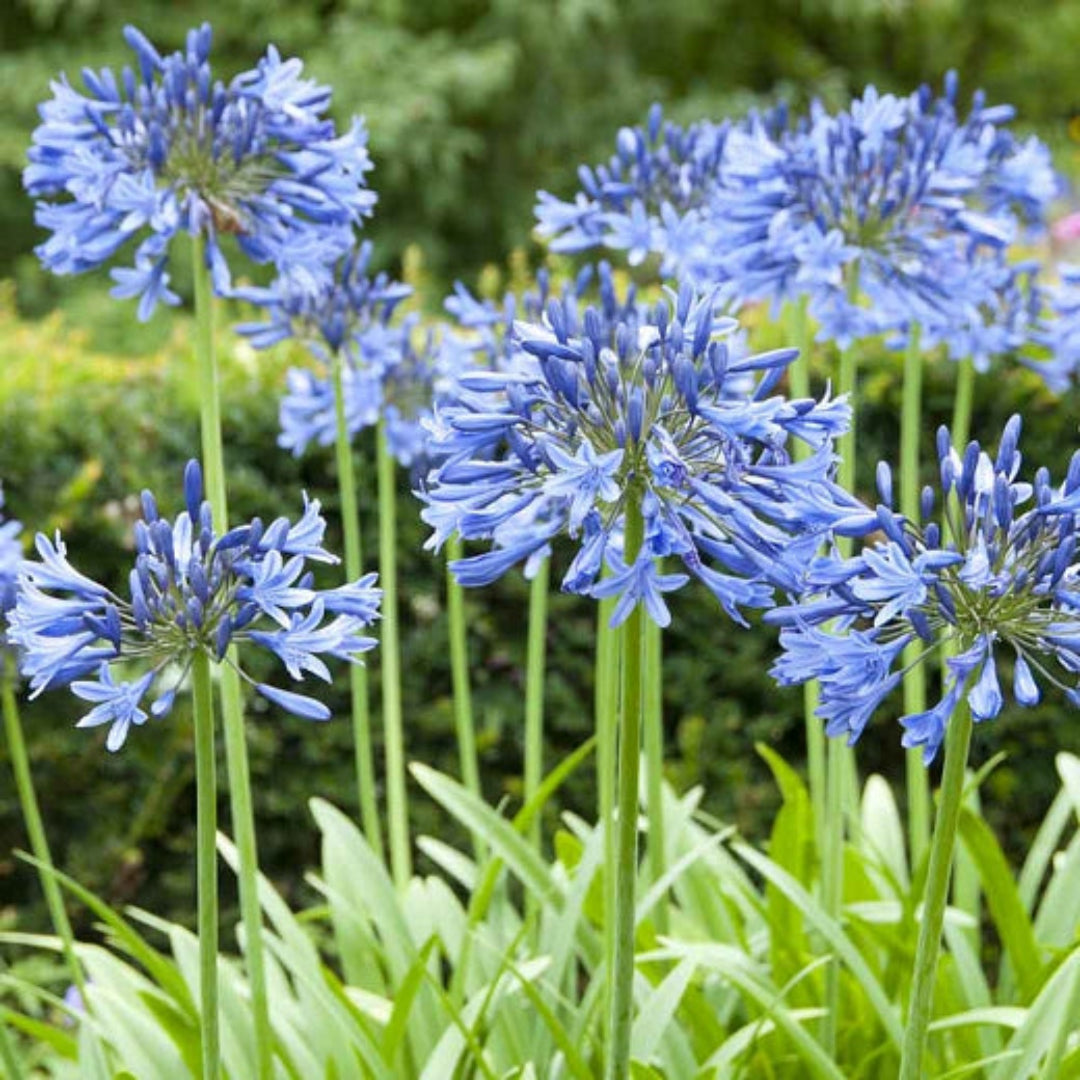Magnificent Agapanthus: Enhancing Your Yard's Elegance
Mastering the Art of Agapanthus Treatment: Vital Steps for Healthy Development and Vivid Flowers
In the realm of gardening, the farming of agapanthus stands as a satisfying endeavor for those who look for to support these classy blooming plants. With their striking blossoms and elegant vegetation, agapanthus has captured the attention of garden enthusiasts worldwide. Nevertheless, accomplishing ideal development and dynamic blossoms requires a nuanced technique that encompasses different vital steps. From picking the ideal range to mastering trimming strategies, the trip towards growing thriving agapanthus plants is multifaceted and holds the crucial to opening the complete capacity of these agricultural treasures.

Selecting the Right Agapanthus Variety

When choosing the appropriate Agapanthus variety for your yard, take into consideration variables such as climate viability, blossom color, and growth habit. Agapanthus, typically called Lily of the Nile or African lily, is available in a range of colors ranging from shades of purple and blue to white. Choose a blossom shade that complements your existing garden palette to create a harmonious landscape. In addition, consider the environment in your region to ensure the Agapanthus range you choose can grow in your certain problems. Some ranges are a lot more tolerant of chilly temperature levels, while others favor warmer environments. Recognizing the development routine of different Agapanthus varieties is important for appropriate positioning within your garden. Some selections have a clumping growth behavior, perfect for containers or boundaries, while others have a more dispersing nature, appropriate for ground cover or mass plantings. By thoroughly evaluating these aspects, you can select the excellent Agapanthus range to boost the beauty of your garden.
Suitable Growing Conditions
Considering the ideal environmental requirements is crucial for successful Agapanthus growing. Agapanthus grows in well-draining dirt with a slightly acidic to neutral pH degree. When planting, select a place that receives full sunshine to partial color. In hotter environments, giving some afternoon color can prevent scorching of the fallen leaves. Agapanthus plants are delicate to cool temperatures and should be shielded from frost during cold weather.
To guarantee healthy development and vibrant flowers, plant Agapanthus light bulbs at a deepness of regarding 2-4 inches and room them 8-12 inches apart. Mulching around the base of the plants assists maintain wetness and subdues weed growth.
Watering and Fertilizing Tips
Maintaining proper moisture degrees and providing essential nutrients are crucial elements in the treatment program for Agapanthus plants. When it concerns sprinkling Agapanthus, it is crucial to strike an equilibrium. If overwatered, these plants choose consistently damp soil yet are at risk to root rot. During the growing season, water deeply once a week, making certain the soil is well-draining to stop waterlogging. In hotter environments or during durations of dry spell, more frequent watering might be required to maintain the soil equally damp. Nonetheless, reduce watering in the wintertime to stop water logged conditions.
Feeding Agapanthus is essential for promoting healthy growth and respected blooms. Apply a well balanced plant food, such as a 10-10-10 formula, in the early spring as brand-new development emerges. By adhering to these watering and feeding pointers, you can guarantee your Agapanthus plants grow and generate dynamic, lasting blooms.
Pruning Methods for Agapanthus
Trimming Agapanthus plants at the ideal times and with proper methods is critical for keeping their health and advertising ideal growth and blooming. The perfect time to prune Agapanthus is in late wintertime or early springtime before new development arises.
Deadheading invested flowers can additionally redirect the plant's power right into generating even more blooms rather than establishing seeds. If you desire to accumulate seeds for proliferation, leave some blossoms to fully grown and dry on the plant.
Remember to utilize clean, sharp devices to make specific cuts and minimize the threat of presenting illness. Agapanthus. Regular trimming will assist keep your Agapanthus looking healthy and balanced and cool while ensuring an abundant screen of attractive flowers
Taking Care Of Common Insects and Illness
After ensuring appropriate pruning techniques for Agapanthus, it is necessary to address common insects and diseases that can impact the health and vitality of these plants. Agapanthus plants are typically durable however can still succumb to specific problems. One usual pest that influences Agapanthus is the try this out Agapanthus gall midget. This small, orange fly lays its eggs in the vegetation, causing distorted development and blossom buds that fail to open up. To battle this pest, trim and destroy any affected plant parts and consider making use of insecticidal soap.
Additionally, Agapanthus plants can endure from root rot if they are grown in inadequately draining pipes soil. By being watchful and taking punctual action against parasites and conditions, you can aid your Agapanthus plants thrive and create lively i thought about this blooms. Agapanthus.

Final Thought
In final thought, understanding the art of agapanthus treatment entails picking the appropriate range, offering suitable growing conditions, correct watering and fertilizing, suitable trimming methods, and attending to common parasites and diseases. By following these important actions, you can make certain healthy growth and lively flowers for your agapanthus plants. Keep in mind to on a regular basis monitor and maintain your plants to advertise their general health and Get the facts long life.
To make certain healthy and balanced development and vivid blossoms, plant Agapanthus light bulbs at a depth of about 2-4 inches and space them 8-12 inches apart. By following these watering and feeding pointers, you can guarantee your Agapanthus plants grow and create vibrant, resilient blossoms.
One typical pest that influences Agapanthus is the Agapanthus gall midge. In addition, Agapanthus plants can experience from origin rot if they are planted in badly draining pipes dirt. By following these crucial actions, you can make sure healthy growth and vivid flowers for your agapanthus plants.